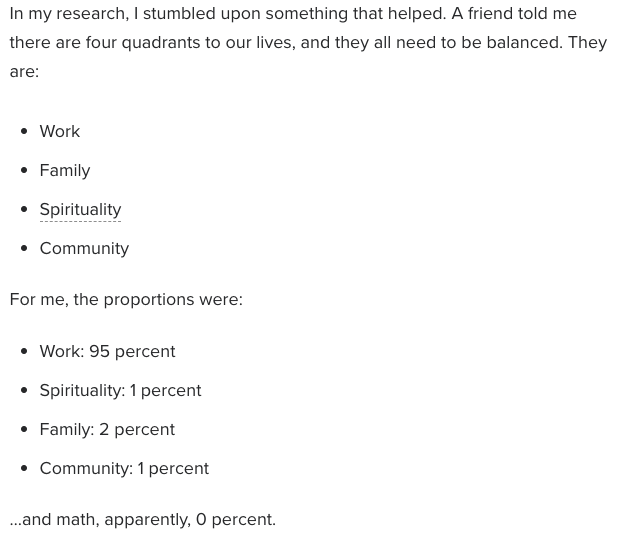
How to Effectively Use Humor in Writing
You’re not a comedy writer, so why – and how – should you use humor in your content writing? Picture a dull gray lecture hall; you’re trying desperately hard to stay awake, but then the professor makes a joke. Suddenly, laughter sweeps through the room. Now, you’re fully awake, and the professor is the focus of everyone’s attention once again. Injecting some humor into your content writing can have the same effect.
In this post, we take a closer look at what humor can do for your writing and how you can use it effectively.
What Is Humor?
To quote Mark Twain:
“Explaining humor is a lot like dissecting a frog: you learn a lot in the process, but in the end, you kill it.”
Nevertheless, let’s start with the dictionary definition and get that over with. Humor is, according to Merriam-Webster, “that quality which appeals to a sense of the ludicrous or absurdly incongruous: a funny or amusing quality.”
Humor can take many forms: from satire to slapstick, dark to double entendre, blood to bile (if you’re trying to be funny though, maybe don’t use that last set – that’s a different type of humor). Not all types work well in written form, however – slapstick, for example, relies heavily on the timing of the physical performance – but some, such as wordplay, can benefit from written form:
“That man just threw milk, cheese, and butter at me. How dairy!”
Can You Use Humor in Content Writing?
The answer to the question that has been asked is simple: yes. (Although, based on the joke above, you may be tempted to ask, “So, why didn’t you use humor?”) The answer to the question that ought to be asked (Should you use humor in content writing?) is more complex: it depends. To determine whether you should use humor, you will need to consider each individual brief and weigh up the benefits against the risks.
Is using humor risky? If you’ve ever sat down to watch your favorite comedy show with relatives and felt the room ice over, you’ll know how subjective it can be. And even the best material can fall flat if poorly delivered.
When humor is written down, the performance element is removed, and that creates a different problem: what may have sounded hilarious in your head could be misinterpreted by a reader, and in most blog posts or articles, you can’t rely on emojis to indicate the reaction you were hoping for. Done poorly or inconsiderately, an attempt at humor could even turn an audience against you or the company for which you’re writing.
So, if it’s such a risky business, why even attempt to use humor in your writing? Laughter is a collective activity; sharing a joke with your audience is a great way to form a bond with them. An otherwise faceless, distant corporation can appear human with the injection of humor into its content.
Think about the posts you’ve read aloud or shared with friends and family; most likely, the bits you’ve chosen to share have been those that have made you laugh. If you want to attract more people to your blog or business, a good use of humor can increase the chances of the content being shared.
How to Add Humor to Your Writing
Knowing that you can add humor to your writing is one thing; how you do it is the tricky bit and forms part of the should you do it equation. Here are our top tips to make the most of the benefits while avoiding the pitfalls of humor.
Stay on Brand
An essential part of any writing assignment you take on is to get a good brief. This should include details of your client’s brand voice. The brief may be, well, brief – for example, “friendly and informative” – in which case, you should read a sample of your client’s existing content to get a feel for how, if at all, humor plays a part in their brand.
Strike a Balance
Bear in mind the primary purpose of the content you’ve been asked to write. Generally speaking, this will be to provide information rather than to make your audience laugh. Writing a post packed with jokes, even your best material, is likely to lead to your reader failing to take the information seriously. Make sure that the humor you inject complements the purpose of your post rather than detracts from it.
Keep It Simple
A well-established rule of comedy is that if you have to explain a joke, it isn’t a good one. Try sticking to humor that is straightforward and likely to be readily understood by your reader. The easiest way to do this is to make it relevant to the subject of your post or article.
Make Yourself Laugh
A sense of humor is a personal thing. Trying to make someone laugh – or even raise a wry smile – by writing what you think they’ll find funny, even though you don’t think it’s funny, is pretty much doomed to fail. But if you write something that you find funny, the chances are that others will, too.
Laugh at Yourself
Your reader will likely have found your piece while looking for a solution to a problem. Empathizing with the problem with a humorous anecdote at your own expense or by seeing the funny side of a common issue is a great way to engage with them.
Read the Room!
Writing something that makes you laugh isn’t the end of the story. Just as you may tell different jokes to your bestie than to your boss, when you include humor in your content, consider your audience.
The subject of the piece may not lend itself to humor so can provide a vital clue to its likely audience: a playful pun may work well in many contexts but probably not in an article about bereavement.
Play It Safe
In terms of content writing, the purpose of your piece will likely be to provide information, not laugh-out-loud comedy. You should therefore take care to avoid anything that might cause offense. Generally speaking, you should steer clear of stereotypes, politics, religion, and controversial current events.
Psst! It Doesn’t Need to Be That Funny
You’re writing content, not comedy, so the purpose of including humor is to lighten the mood or ease the tension. That being so, the bar for comedy is much lower. Don’t believe us? A person shooing away a pigeon isn’t intrinsically funny, but transpose that image to the center court at Wimbledon during a final and you can practically hear the crowd rolling in the aisles. Buster Keaton-level comedy it ain’t, but it works in context. In terms of content writing, this means open season on those much-maligned clichés. And if you can subvert a cliché, so much the better, as Chandler did in Friends:
“Can open. Worms everywhere!”
Some Techniques to Try
We’ve incorporated some of these into the post; see if you can spot them:
- Use humor in your examples
- Open with an anecdote
- Include a humorous quote
- Use the “rule of three” with an absurdly incongruous third element
- Try some alliteration, particularly using words starting with plosives
- Exaggerate for comic effect
- Tweak a cliché
Examples of Humor in Writing
Now that we’ve given our tips and you’ve had a go at finding examples in this post, let’s have a look at how others have used them to good effect.
This post about email outreach uses the rule of three to comedic effect:

In this post about depression, the author shows how humor can be used to engage with the reader on a serious subject by laughing at herself:

Of course, you can also combine techniques, like in this post about online marketing metrics, which uses anecdote, exaggeration, and alliteration:

Becoming A Freelance Writer
So, now you know:
- That you can use humor in your writing
- That whether you should do so will depend on the subject matter, audience, and brand voice
- That just a little will go a long way when you’re writing content, not comedy
If you would like to take your writing to the next level, our Becoming a Freelance Writer course covers everything you need to know to write professional blog posts and articles, including how to adjust your tone to suit your target audience and reflect your client’s brand voice. You can even try it out for free.





Your email address will not be published.